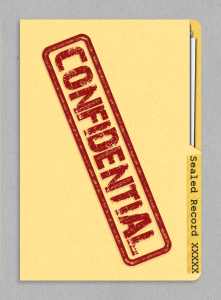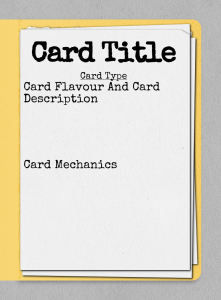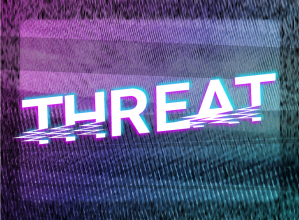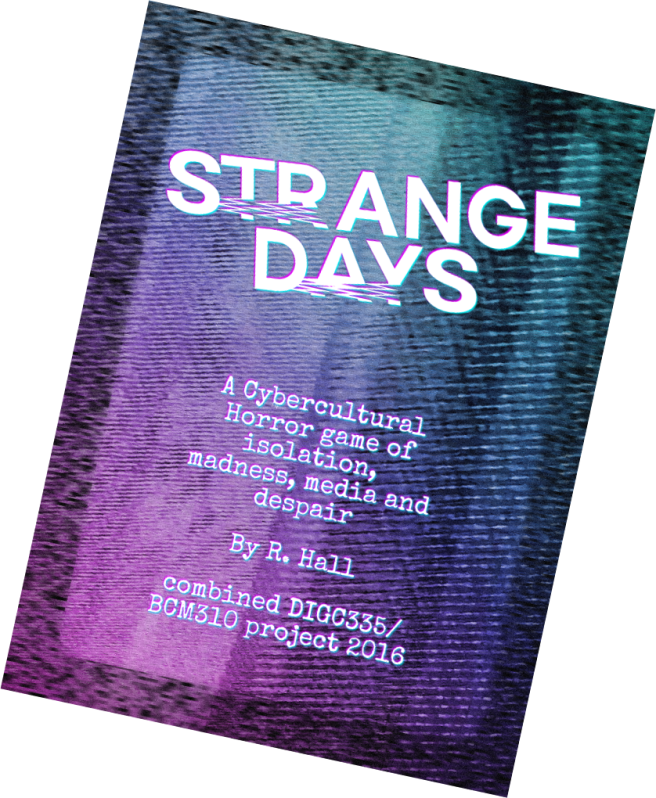
This is the design document, base instructions and personal reflection dossier for Strange Days, an asymmetrical multiplayer card game for 3-5 players. Set in the near future, players either take on the role of a lone Threat endangering the world, or the role of a group of Hunters opposing the Threat.
Goal
The world is being endangered by a terrifying, inhuman threat. If you play the hunters, you’re here to try and divine who the threat is, and what the threat wants, how to stop it – and then, hopefully, fight it back from the edge of consuming the world.
Or you might be the threat – trying to consume this last line of defence between you and your inscrutable aims.
System Components
Strange Days is has the following components:
- A deck of 99 cards
- 4 Clue Cards
- 5 Character ID Cards
- 25 Character Tactic Cards
- 9 Threat ID Cards
- 28 Threat Encounter Cards
- 18 Scar Cards
- 10 Asset Cards
- An Instruction booklet
- A Threat’s Edict booklet
- A number of discs as counters
Instructions
Strange Days, once setup, is a game broken into a sequence of two parts: Investigation and Encounters. The Threat spends investigation phases building a plan that will be enacted in the Encounter phase, while the Hunters recover from their injuries, build their resources and try to determine information about both the nature of the Threat, and their ways to respond to it. During the Encounter phase, the Hunters engage with the systems set up by the Threat. Whichever side wins the Encounter earns a Clue card. When the Threat has three clue cards, they win the game – when the Hunters have three clue cards, they initiate the Final Encounter, a more powerful Encounter using all the Threat’s power.
Setup
The Threat player shuffles the Threat ID cards, and chooses one at random, then returns the remaining Threat ID cards to the box. This indicates who the Threat player is playing.
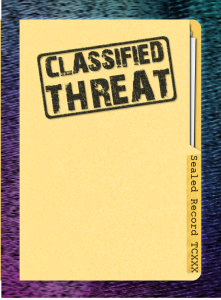 The Threat then shuffles the Threat Encounter cards up, and the Clue cards. The Threat also keeps their Threat’s Edict booklet on hand.
The Threat then shuffles the Threat Encounter cards up, and the Clue cards. The Threat also keeps their Threat’s Edict booklet on hand.
The Hunters choose a Character to play, and set the face of that character’s Character ID card face-up in front of them. Then, based on that character, the Hunter chooses a Tactic they’d like to use, and selects the five cards from that Tactic and keep them next to their ID card.
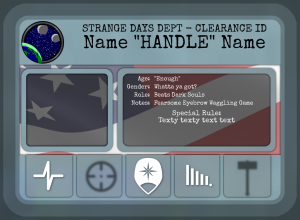 Then, players shuffle up the Asset deck, the Scar deck, and set them near where the Hunters can get them.
Then, players shuffle up the Asset deck, the Scar deck, and set them near where the Hunters can get them.
The Threat Edict Book
In addition to the above, the Threat has a small booklet, known as the Threat Edict Book. This book contains entries based on what type of Threat the Threat is, and the hunters opposing the Threat. This is an optional game element that the Threat does not need to use, and it’s designed to add some flavour to the game and deepen the game world.
|
Sidebar |
Play
Once the game is set up, the game plays in two main game phases: Investigation, during which the Threat builds an encounter while the Hunters try to get to the bottom of it, and the Encounter, where the Hunters confront the encounter made by the threat.
Investigation
First, the Threat draws cards until they have six cards in hand. Then, the threat chooses two cards to place in front of them, face-down, in a sequence. These cards are the Encounter Stack. The Threat then discards two cards, face-down. These cards go together in the Trash. The Threat keeps two cards in their hand. If it’s the very first Investigation in the game, the Threat does this twice – draw to six, place two, discard two; then draw up to six, place two and discard two again.
Then, the Hunters have their turn. Each Hunter, during each turn of the Investigation, can choose to do any of the following:
- Recover
- Use An Asset
- Investigate
When a player Recovers they take a single wound off their character ID, indicating that they have spent time since the last encounter resting and seeking medical attention for injuries. The individual number of wounds characters can take vary from character to character, and will be shown on individual cards.
Each Asset has a use effect on it, and players can choose to spend a turn to gain that effect.
When a player Investigates, they get to look at hidden cards, pursuing the Threat, or a greater understanding of other hunters. The hunter chooses one of four options:
- They can look at a single card in the Encounter Stack of their choice
- They can look at a single card in the Threat’s hand
- They can look at all the cards in the Junk
- They can look at, with permission, a single Scar card from another Hunter.
These are not without dangers!
- Cards in the Encounter Stack can be trapped! There’s a chance that revealing a card in the Encounter Stack might trigger a trap that harms the group. There’s also a chance that card might be a card with Maturation, meaning that finding it before the Encounter begins neutralises something that could have become much worse!
- To look in the Threat’s hand is to briefly stray too close to something dreadful – a player gains a Scar, regardless of what they learn!
- There’s no drawback or risk to looking in the Junk.
- A Hunter may not be willing to show another Hunter one of their scars. Sometimes this may be because the Scar explicitly prevents this; sometimes this may be because the Scar spreads an effect to someone when it’s shown. Sometimes the player may just want to be private.
When the Hunters have conducted their investigations, the turn passes back to the Threat. When the Threat puts down enough cards to make the Encounter Stack six cards, the Investigation ends, and players move to the Encounter phase.
Encounter
The Threat flips over the six cards of the Encounter stack, which now determine what the Encounter has in it. The order the cards were placed is important – make sure to arrange them so that it’s clear what cards were placed before others.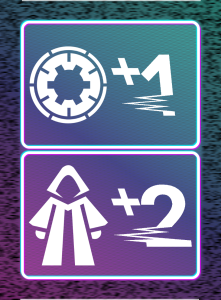
Encounters have Fortification and Defenders. Fortifications represent how well secured the location is from attack and Defenders how many people the Threat has managed to persuade to inhibit the actions of the Hunters. They may not even realise what they’re doing.
When the cards are flipped over, the defenders are created, on either side of any barricades. These are each represented by a coin-like token that sits on the table. Each turn, the defenders who can reach the Hunters attempt to do damage to the Hunters, and impede their ability to do damage to the Fortifications of the Encounter.
The Encounter cannot be defeated unless its Fortifications have been destroyed by doing enough damage to them. This is done by player tactics.
Once the Encounter has been revealed, the Hunt begins.
The Hunt
Hunters lay out a single card, face down, each turn indicating what tactic they are choosing for this. The hunters can place their cards in any order, but they must choose to place their cards down before or after another player. So a player can place their card down, and the next player can choose to either act before them, or after them.
Note: While this is happening, Hunters can’t talk. The Hunters have to position their cards without information about what they’re doing. Then, when all the Hunters have placed a card, they all flip them over and work through what happened, in order.
When players are attacked by the defenders, they’re attacked in order of these cards. Some effects improve or change things for each player after them – and attacks that are made on fortifications can do more damage if there are no defenders to stop them.
Then, after the round, the Hunters take a single card of their tactic stack and set it aside, face down. This is the timer on each encounter – the hunters only have five turns, in total, to make their move, and as they fight, their options become more limited.
Note as well, once the Encounter is over, no matter the outcome, one of the Hunters (chosen at random from those who have the fewest scars) gets a Scar card, which now sits next to their character sheet, face-down.
Special Cards
Sabotage: Cards marked as Sabotage cards do not contribute to the encounter during it. They’re only useful for punishing players during the Investigation phase.
Maturation: Cards marked as Maturation have a number, and are consider Mature if they are under that many other cards. If a Mature card is revealed during the Investigation, it is flipped over and does nothing.
Barricades: Barricades are cards that divide the Fortifications up, and create ‘rooms’ for the defenders to hide in. Every turn a barricade is up, all the cards under it that can create defenders create another defender. Barricades have to be destroyed or removed separately, and once they are destroyed, the fortifications under them can be attacked.
Final Encounter
If the Hunters successfully gather three Clues, they are given the location of the Final Encounter – which is executed without an Investigation. The Threat is allowed to take all the cards from the Threat deck, and their Threat ID card, and create an encounter of six cards out of them. This then plays out like an ordinary Encounter, with the Threat ID card at the very bottom. If the players break through the fortifications, they have overcome the threat, and won the game.
Resolution
There are two main ways someone can win the game:
If the Threat wins three Clue cards, they have won the game, and evaded the Hunters. The Hunters are left without an opportunity to prevent the end of the world, and must wait to see the end as it comes true.
If the Hunters win three Clue cards, then defeat the Threat in the final encounter, they win the game, and have staved off the Threat, for now.

